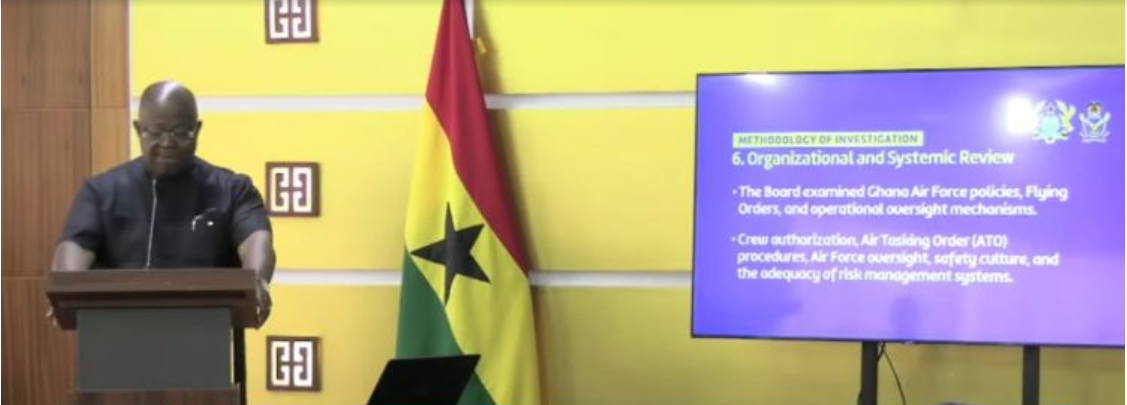adverts
The investigative committee that examined the tragic August 6, 2025 military helicopter crash has concluded that the disaster was caused by a sudden loss of altitude and lift resulting from a powerful downdraft.
Presenting the committee’s findings at a public briefing on Tuesday, November 11, Captain (Rtd) Paul Forjoe, a member of the team, explained that the Ghana Air Force helicopter encountered abrupt and severe environmental changes while flying over high terrain, which led to a fatal descent.
“The investigation determined that the accident was caused by the sudden loss of altitude and lift due to downdraft,” Captain Forjoe stated.
“This loss of altitude without a change in power or pitch attitude is consistent with a downdraft associated with changing environmental conditions over high terrain.”
adverts
The committee, chaired by the Acting Minister for Defence, Dr Cassiel Ato Forson, was established shortly after the crash to determine its cause and recommend safety measures to prevent future occurrences.
Its final report, which covered technical, operational, and environmental factors, concluded that the Harbin Z-9EH helicopter (tail number GHF 631) suffered a rapid and uncontrollable loss of lift due to the downdraft, despite functioning engines and control systems.
The helicopter, operated by the Ghana Air Force, took off from Accra at about 9:12 a.m., en route to Obuasi in the Ashanti Region, on an anti-illegal mining operation. However, it lost radar contact mid-flight before crashing in the Adansi Akrofuom District.
Tragically, all eight passengers and crew on board were killed. The victims included:
- Dr Edward Omane Boamah, Minister for Defence
- Ibrahim Murtala Muhammed, Minister for Environment, Science and Technology
- Muniru Mohammed Limuna, Acting Deputy National Security Coordinator
- Samuel Sarpong, NDC Vice-Chair
- Samuel Aboagye, former parliamentary candidate
- Squadron Leader Peter Bafemi Anala
- Flying Officer Manaen Twum Ampadu
- Sergeant Ernest Addo Mensah
The committee’s report also acknowledged that the aircraft was airworthy and had undergone routine maintenance checks, ruling out mechanical failure as the primary cause.
It recommended that the Ghana Air Force enhance pilot training in advanced weather recognition and terrain navigation and that improved weather monitoring equipment be installed at key operational bases to detect and warn of sudden downdrafts or wind shear.
The Ministry of Defence has since pledged to implement the recommendations, ensuring that the lessons learnt from the tragedy will guide future operational safety protocols for military aviation in Ghana.
Click the link Puretvonline.com | WhatsApp Channel to join the WhatsApp channel
GOT A STORY?
Contact/WhatsApp: +233243201960 or manuelnkansah33@gmail.com


